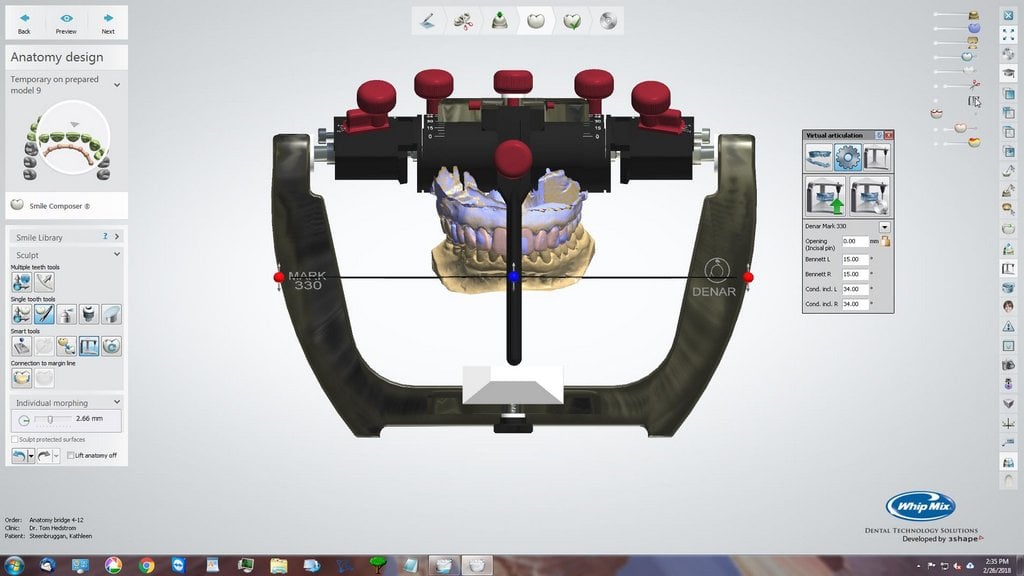In the last 2 parts, we discussed condylar guidance settings and why average/arbitrary settings work for most of the patient population. However, there are times when a dentist will need to have work manufactured by a laboratory technician that require the restorations to incorporate jaw movement that is closer to true patient movements.
Adjustable Inclination and Bennett Angle Settings
When is 30° degree condylar inclination, (patient average settings), not enough? Remember, we can get by with patient averages when a patient comes to us with a healthy mouth and existing teeth which help to separate the posterior teeth during excursive movements. When a patient has an open anterior bite, a class 3 bite, a history of any jaw trauma, or known disease within the TMJ or condyles, the clinician has to be more precise in programming the articulator to match condylar inclination in order to prevent further damage.
The purpose of having an instrument that offers adjustability in condylar inclination gives the dentist and technician the ability to closely match the downward angle that the condyle travels against the superior wall of the eminence. Most articulators that provide adjustability have a range from 0° - 70° degrees. Programming the articulator to the correct angle is key to making sure the posterior teeth separate immediately when the jaw begins its movement. Remember, most patients’ condylar inclination will be higher than an arbitrary setting of 30° degrees. Having an instrument that gives you this adjustability could be extremely important when restoring complicated restorative cases.
Another setting on the articulator is known as the Bennett Angle or Lateral Condylar Guidance. Let’s briefly discuss the importance of this setting.
For most restorative work, setting up the articulator to incorporate a normal Bennett Angle is all that is necessary. Obtaining a lateral record is accomplished by having the patient move their jaw to the left and right. At the end of each movement the clinician will use registration material to capture the position which will register the patients Bennett Angle/Lateral Condylar Guidance. This record will be placed between the mounted maxillary and mandibular casts independently to program the lateral setting on the articulator.
Another movement that might require consideration is known as the Bennett Side Shift. It is a complex lateral movement or shift of the mandible, that results from the movements of the condyles along the lateral inclines of the mandibular fossae during lateral jaw movement. This movement occurs immediately and before any translation movement. In the immediate Bennett side shift, the orbiting condyle moves essentially straight medially as it leaves centric relation at the beginning of the lateral jaw movement. The progressive Bennett side shift creates an angle (the Bennett angle) formed by the sagittal plane, and the path of the advancing condyle during lateral mandibular movement as viewed in the horizontal plane.
For occlusal rehabilitation, understanding the importance of programming the articulator to have a Bennett angle that is close to the patient averages ties into the gnathological importance, since its presence and size affects the occlusal relationships of denture fabrication.
Important to note that determining whether or not the patient presents with an Immediate Shift Side scenario can only be established by taking an electronic recording of the patient during excursive movements with a device like the Cadiax Compact 2.











Leave a comment